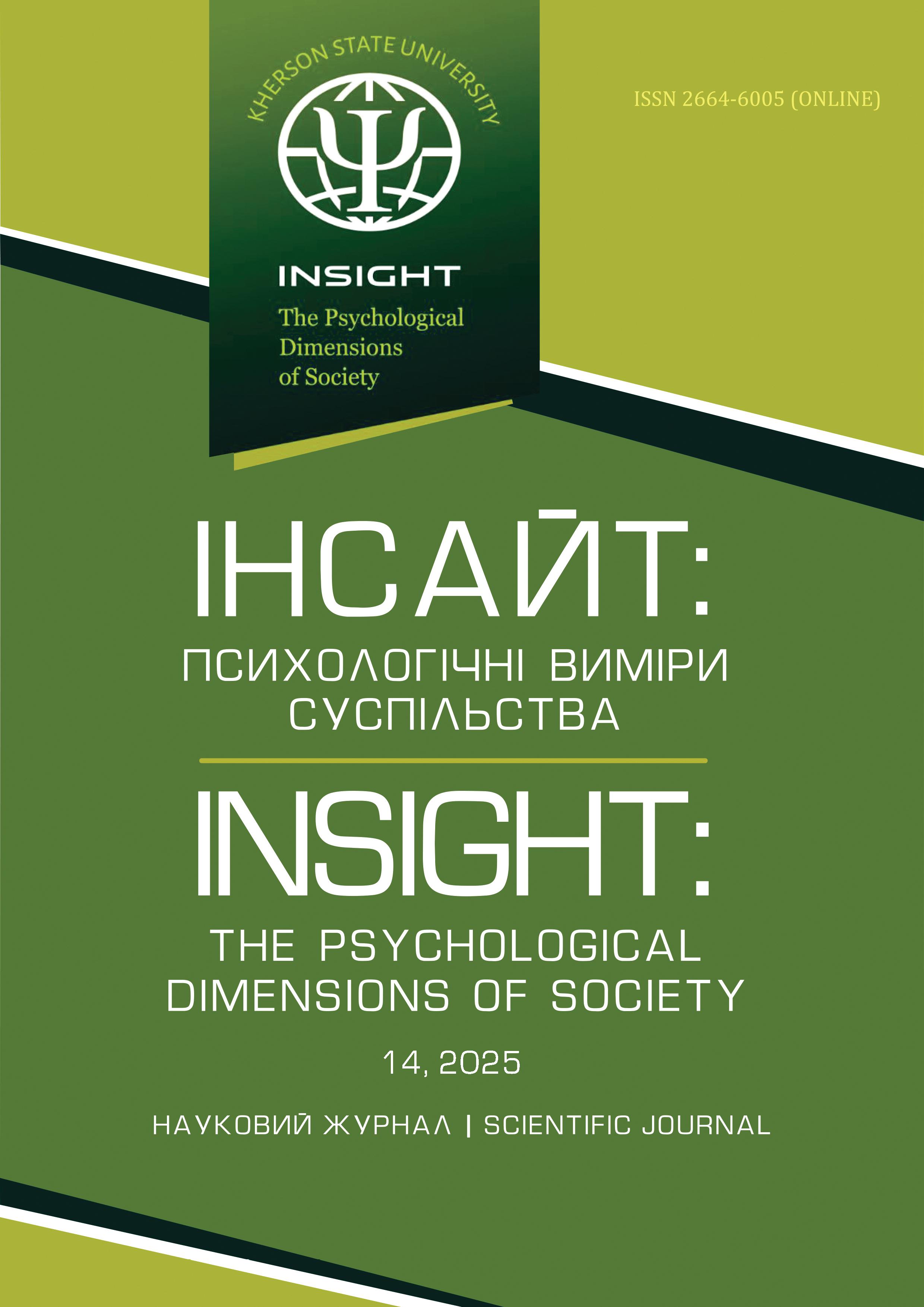Research on the Efficacy of Reciprocal Imitation Training for Children with Autism Spectrum Disorders
Abstract
The aim of the research is to implement reciprocal imitationtraining on a Ukrainian sample, that is a promisingdirection for teaching imitation skills to childrenwith autism spectrum disorders (ASD) in a social-interactivecontext. A hybrid form of Reciprocal ImitationTraining (RIT) for families raising children with autismspectrum disorders is hypothesized to have demonstrableefficacy in reducing parenting stress and increasingparenting competence. Methods. An early intervention program and research on the use of reciprocal imitationgroup training for parents raising children with autismspectrum disorders are presented, aimed at increasingparental competence and reducing parental stress. Dueto pandemic restrictions, the training was deliveredin a hybrid (online and offline) format. The researchwas carried out in the fall of 2021. The study involvedtwelve families who had children with a clinical diagnosisof “Autism F84.0” according to ICD-10-CM, whichwas confirmed by STAT and ADOS-2 results. Results.There was a statistically significant difference inparental stress indicators =-2.24 (p≤.05) when the twopre-experimental (M1=111.59) and post-experimental(M2=70.16) sections were compared. A statisticallysignificant increase in the indicators of parental competencewas observed before and after the experiment(α=.05 t=-2.87). There were statistically significant differencesin the growth of general social communication(α=.05 t=-2.83) and social engagement (α=.05 t=-2.04)indicators of children’s social communication skills. Itshould be noted that no statistically significant differencesin the parameters of expressive communication,receptive communication, and imitation/game werediscovered. Discussion and conclusions. Positivebehavioral changes in children with autism spectrumdisorders, as well as a decrease in parental stress indicatorsand an increase in parental competence, havebeen experimentally proven and theoretically supported.To determine the effectiveness of the applicationof reciprocal imitation training on the Ukrainiansample, it is recommended that it be actively implementedand operationalized, with online and offlineformats verified.
Downloads
References
Abidin, R., Flens, J. R., & Austin, W. G. (2006). The Parenting Stress Index. In R. P. Archer (Ed.), Forensic uses of clinical assessment instruments (pp. 297–328). Lawrence Erlbaum Associates Publishers. https://psycnet.apa.org/record/2006-03622-011
Amireh, M. M. H. (2019). Stress levels and coping strategies among parents of children with autism and down syndrome: The effect of demographic variables on levels of stress. Child Care in Practice, 25(2), 146–156. https://doi.org/10.1080/13575279.2018.1446907
American Psychiatric Association, DSM-5 Task Force. (2013). Diagnostic and statistical manual of mental disorders: DSM-5™ (5th ed.). American Psychiatric Publishing, Inc. https://doi.org/10.1176/appi.books.9780890425596
Babatina, S. I., & Shvestko, O. O. (2019). Empirychne doslidzhennia sotsialno-psykholohichnykh osoblyvostei batkivskoho stavlennia do ditei z autyzmom [Empirical Research of Social-Psychological Features of Parental Attitudes to Children with Autism]. Insayt: psykholohichni vymiry suspil’stva – Insight: the psychological dimensions of Society, 2, 7–15. https://doi.org/10.32999/2663-970X/2019-2-1
Baio, J., Wiggins, L., Christensen, D. L., Maenner, M. J., Daniels, J., Warren, Z., … Dowling, N. F. (2018). Prevalence of Autism Spectrum Disorder Among Children Aged 8 Years – Autism and Developmental Disabilities Monitoring Network, 11 Sites, United States, 2014. Morbidity and mortality weekly report. Surveillance summaries (Washington D. C.: 2002), 67(6), 1–23. https://doi.org/10.15585/mmwr.ss6706a1
Bandura, A., Barbaranelli, C., Caprara, G. V., & Pastorelli, C. (1996). Multifaceted Impact of Self-Efficacy Beliefs on Academic Functioning. Child. Development, 67(3), 1206–1222. https://doi.org/10.2307/1131888
Barańczuk, U., & Pisula, E. (2022). Parental stress and symptoms of depression: A preliminary report. International Journal of Developmental Disabilities, 68(4), 445–453. https://doi.org/10.1080/20473869.2020.1797450
Bispo-Torres, A. C., Lucena, R., Tavares-Rodrigues, I. C., Barouh, J. L., Lins-Silva, D. H., Dorea-Bandeira, I., . . . Bandeira, I. D. (2023). Psychopathological symptoms in parents and siblings of people on the autism spectrum: A systematic review and meta-analysis. Psychiatry Research, 323. https://doi.org/10.1016/j.psychres.2023.11514
Brown, M., Whiting, J., Haque, A., & Kahumoku-Fessler, E. (2020a). A dyadic model of stress, coping, and marital satisfaction among parents of children with autism. Family Relations, 69(1), 138–150. https://doi.org/10.1111/fare.12375
Brown, M., Whiting, J., Haque, A., Kahumoku-Fessler, E. (2020b). A summative content analysis of stress and coping among parents of children with autism. American Journal of Family Therapy, 49(3), 1–14. https://doi.org/10.1080/01926187.2020.1791764
Dabrowska, A., & Pisula, E. (2010). Parenting stress and coping styles in mothers and fathers of preschool children with autism and Down syndrome. J. Intellect. Disabil. Res., 54(3), 266–80. https://doi.org/10.1111/j.1365-2788.2010.01258.x
Division for Early Childhood (2014). DEC recommended practices in early intervention/early childhood special education 2014. Division for Early Childhood. http://www.decsped.org/recommendedpractices Hayes, S. A., & Watson, S. L. (2013). The impact of parenting stress: a meta-analysis of studies comparing the experience of parenting stress in parents of children with and without autism spectrum disorder. J. Autism Dev Disord., 43, 629–42. https://doi.org/10.1007/s10803-012-1604-y
Hermaszewska, S., & Sin, J. (2021). End-user perspectives on the development of an online intervention for parents of children on the autism spectrum. Autism, 25(5), 1234–1245. https://doi.org/10.1177/1362361320984895
Ingersoll, B., Straiton, D., & Caquias, N. R. (2020). The role of professional training experiences and manualized programs in ABA providers’ use of parent training with children with autism. Behavior Therapy, 51(4), 588–600. https://doi.org/10.1016/j.beth.2019.09.004
Kogutiak, N. M. (2020). Zasoby navchannia empatii ditei z rozladamy spektru autyzmu [Empathy Learning Tools for Children with Autism Spectrum Disorders]. European Humanities Studies: State and Society, 1, 126–139. https://doi.org/10.38014/ehs-ss.2020.1.10
Kostiukow, A., Poniewierski, P., Janowska, D., & Samborski, W. (2021). Levels of happiness and depression in parents of children with autism spectrum disorder in Poland. Acta Neurobiologiae Experimentalis, 81(3), 279–285. https://doi.org/10.21307/ANE-2021-026
Liang, C. S., Bai, Y. M., Hsu, J. W. et al. Associations of parental mental disorders and age with childhood mental disorders: a population-based cohort study with four million offspring. Eur. Child. Adolesc. Psychiatry, 32, 825–833. https://doi.org/10.1007/s00787-021-01914-3
Lord, C., Rutter, M., DiLavore, P. C., Risi, S., Gotham, K., & Bishop, S. L. (2012). Autism Diagnostic Observation Schedule. 2nd. Torrence, CA: Western Psychological Services, 1–4. (ADOS-2) Manual (Part I): Modules. https://eric.ed.gov/?id=EJ1021221
McConachie, H., & Diggle, T. (2007). Parent implemented early intervention for young children with autism spectrum disorder: a systematic review. Journal of Evaluation in Clinical Practice, 13(1), 120–129. https://doi.org/10.1111/j.1365-2753.2006.00674.x
Mills, A. S., Tablon-Modica, P., Mazefksy, C. A., & Weiss, J. A. (2022). Emotion dysregulation in children with autism: A multimethod investigation of the role of child and parent factors. Research in Autism Spectrum Disorders, 91, 101911. https://doi.org/10.1016/j.rasd.2021.101911
Mugno, D., Ruta, L., D’Arrigo, V. G., Mazzone, L. (2007). Impairment of quality of life in parents of children and adolescents with pervasive developmental disorder. Health Qual Life Outcomes, 5, 22. https://doi.org/10.1186/1477-7525-5-22
National Research Council. (2001). Educating children with autism. The National Academies Press. https://nap.nationalacademies.org/catalog/10017/educating-children-with-autism
Nunnally, D. A., Factor, R. S., Sturm, A., Soorya, V. L., Wainer, A., Taylor, S., . . . Gulsrud, A. C. (2023). Examining indicators of psychosocial risk and resilience in parents of autistic children. Frontiers in Behavioral Neuroscience, 17. https://doi.org/10.3389/fnbeh.2023.1102516
Piro-Gambetti, B., Greenlee, J., Hickey, E. J., Putney, J. M., Lorang, E., & Hartley, S. L. (2023). Parental depression symptoms and internalizing mental health problems in autistic children. Journal of Autism and Developmental Disorders, 53(6), 2373–2383. https://doi.org/10.1007/s10803-022-05518-x
Rahman, P. A., & Jermadi, S. H. (2021). Parental stress and parenting styles in managing autistic children with behaviour problems. Malaysian Journal of Medicine and Health Sciences, 17, 84–91. https://doi.org/10.1080/1034912X.2020.1837354
Rattaz, C., Loubersac, J., Michelon, C., Picot, M., Baghdadli, A., for the ELENA study group. (2023). Changes in mothers’ and fathers’ stress level, mental health and coping strategies during the 3 years following ASD diagnosis. Research in Developmental Disabilities, 137, 104497. https://doi.org/10.1016/j.ridd.2023.104497
Sarwar, F., Panatik, S. A., Jameel, H. T., Wan Mohd Yunus, W. M. A., & Muhamad, S. N. (2022). Psychological Capital, Social Support and Wellbeing in Mothers of Children with Autism Spectrum Disorder. SAGE Open, 12(3). https://doi.org/10.1177/21582440221121773
Schlink, A., Williams, J., Pizzano, M., Gulsrud, A., & Kasari, C. (2022). Parenting stress in caregiver-mediated interventions for toddlers with autism: An application of quantile regression mixed models. Autism Research, 15(2), 353–365. https://doi.org/10.1002/aur.2637
Sharma, S., Govindan, R., & Kommu, J. V. S. (2022). Effectiveness of Parent-to-Parent Support Group in Reduction of Anxiety and Stress Among Parents of Children with Autism and Attention Deficit Hyperactivity Disorder. Indian Journal of Psychological Medicine, 44(6), 575–579. https://doi.org/10.1177/02537176211072984
Shin, J., Nhan, N. V., Crittenden, K. S., Hong, H. T. D., Flory, M., & Ladinsky, J. (2006). Parenting stress of mother and fathers of young children with cognitive delay in Vietnam. J. Intel. Disab. Res., 50(10), 748–760. https://pubmed.ncbi.nlm.nih.gov/16961704/
Stone, W. L., McMahon, C. R., & Henderson, L. M. (2008). Use of the Screening Tool for Autism in Two-Year-Olds (STAT) for children under 24 months: an exploratory study. Autism, 12(5), 557–73. https://pubmed.ncbi.nlm.nih.gov/18805947/
Tonge, B., Brereton, A., Kiomall, M., Mackinnon, A., King, N., & Rinehart, N. (2006). Effects on parental mental health of an education and skills training program for parents of young children with autism: a randomized controlled trial. Journal of the American Academy of Child and Adolescent Psychiatry, 45(5), 561–569. https://doi.org/10.1097/01.chi.0000205701.48324.26
Wainer, A. L., Arnold, Z. E., Leonczyk, C., & Soorya V. L. (2021). Examining a stepped-care telehealth program for parents of young children with autism: A proof-of-concept trial. Molecular Autism, 12(1). https://doi.org/10.1186/s13229-021-00443-9
Wainer, A. L., Berger, N. I., & Ingersoll, B. R. (2017). Brief report: The preliminary psycho-metric properties of the Social Communication Checklist. J. Autism. DevDisord., 47(4), 1231–8. https://pubmed.ncbi.nlm.nih.gov/28105548/
Yakniunas Ye. Ye., & Husak N. Ye. (2019). Chynnyky batkivskoho stresu batkiv, yaki vykhovuiut dytynu z rozladamy autystychnoho spektra. [Factors of Parental Stress of Parents Raising a Child with Autism Spectrum Disorders]. Psykholohiia ta psykhosotsialni interventsii. – Psychology and Psychosocial Interventions, 2, 67–74. https://doi.org/10.18523/2617-2348.2019.2.67-74
Authors who publish with scientific journal agree to the following terms:
• All scientific papers may be freely copied and distributed on any medium and in any format, provided that the references to the initial data of the scientific work are indicated.
• Authors retain copyright and grant the journal right of first publication with the work simultaneously licensed Creative Commons Attribution License .
• Authors are able to enter into separate, additional contractual arrangements for the non- exclusive distribution of the journal’s published version of the work (institutional repository, your website, monograph), with an acknowledgement of its initial publication in this journal.





































